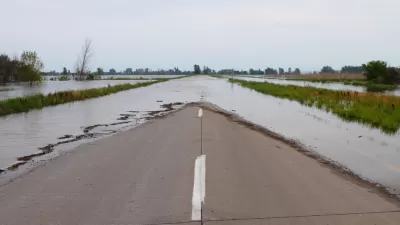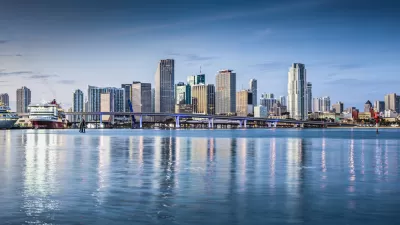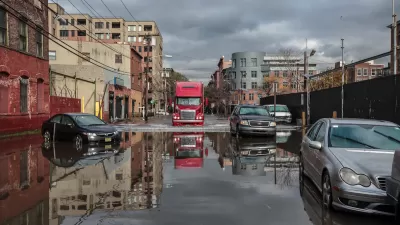Severe flooding in these coastal areas will become the norm, but how to best address the environmental challenges is not entirely clear.

The last five years have been the wettest in Great Lakes history, and water levels have reached unprecedented highs, writes Peter Annin. "But some scientists believe a more complicated dynamic is at work: a warming climate that will continue to cause extreme fluctuations in weather and water levels, threatening havoc for lakeside homeowners, towns and cities, tourism and shipping."
Communities and residents in shoreline areas along the lakes need to prepare for a future of weather extremes, says Annin. But resiliency strategies have taken different forms. In Quebec, for example, officials are encouraging flooded property owners to take buyouts while New York officials are promoting the shoring up of land along Lake Ontario.
The question of whether investing in infrastructure and strategies to fight back rising waters makes sense remains up in the air. "Armoring the shoreline is one form of adaptation. Property buyouts are another. History will show which strategy is most effective over time. What’s clear is that some people have built too close to the water’s edge," notes Annin.
FULL STORY: Along the Great Lakes, It’s Time to Prepare for Extremes

Study: Maui’s Plan to Convert Vacation Rentals to Long-Term Housing Could Cause Nearly $1 Billion Economic Loss
The plan would reduce visitor accommodation by 25,% resulting in 1,900 jobs lost.

North Texas Transit Leaders Tout Benefits of TOD for Growing Region
At a summit focused on transit-oriented development, policymakers discussed how North Texas’ expanded light rail system can serve as a tool for economic growth.

Why Should We Subsidize Public Transportation?
Many public transit agencies face financial stress due to rising costs, declining fare revenue, and declining subsidies. Transit advocates must provide a strong business case for increasing public transit funding.

How to Make US Trains Faster
Changes to boarding platforms and a switch to electric trains could improve U.S. passenger rail service without the added cost of high-speed rail.

Columbia’s Revitalized ‘Loop’ Is a Hub for Local Entrepreneurs
A focus on small businesses is helping a commercial corridor in Columbia, Missouri thrive.

Invasive Insect Threatens Minnesota’s Ash Forests
The Emerald Ash Borer is a rapidly spreading invasive pest threatening Minnesota’s ash trees, and homeowners are encouraged to plant diverse replacement species, avoid moving ash firewood, and monitor for signs of infestation.
Urban Design for Planners 1: Software Tools
This six-course series explores essential urban design concepts using open source software and equips planners with the tools they need to participate fully in the urban design process.
Planning for Universal Design
Learn the tools for implementing Universal Design in planning regulations.
Ascent Environmental
Borough of Carlisle
Institute for Housing and Urban Development Studies (IHS)
City of Grandview
Harvard GSD Executive Education
Toledo-Lucas County Plan Commissions
Salt Lake City
NYU Wagner Graduate School of Public Service





























